The cosmos meets art history in Vivian Greven’s New York exhibition
Vivian Greven’s ‘When the Sun Hits the Moon’, at Perrotin in New York City, is the artist’s first solo exhibition in the USA
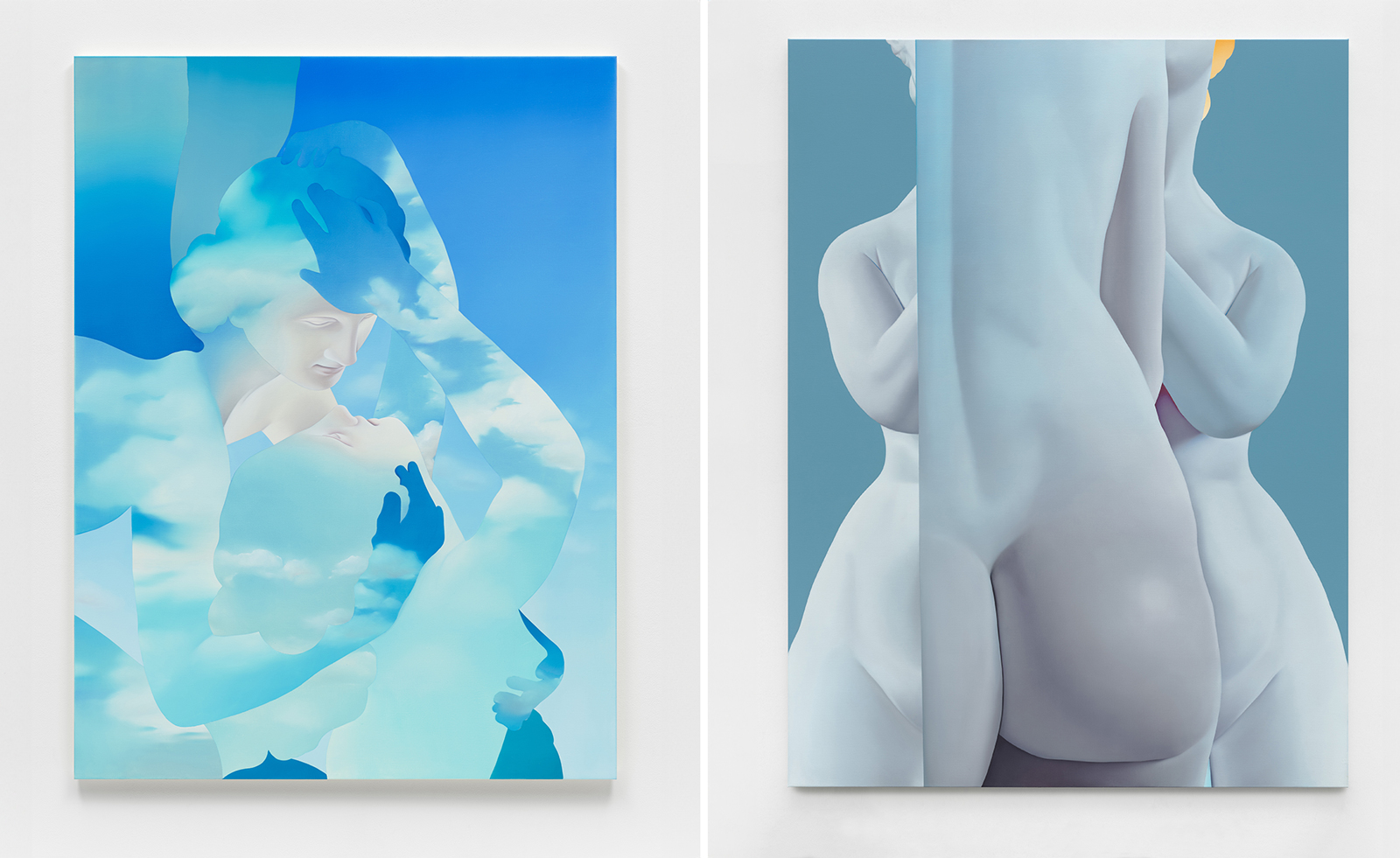
What does it mean to live in a world organised by the cosmos? A world structured not by humans, not by machines, but by natural forces?
Through a distinct painterly style blending technical precision with the layered effects of peering into digital screens, artist Vivian Greven addresses questions like these and more. She dives into Greco-Roman art history to mine the depths of and myths surrounding ancient sculptures; to mirror our existence on a cosmological scale; to reimagine what it means to occupy a body – and this world – today.
More like this
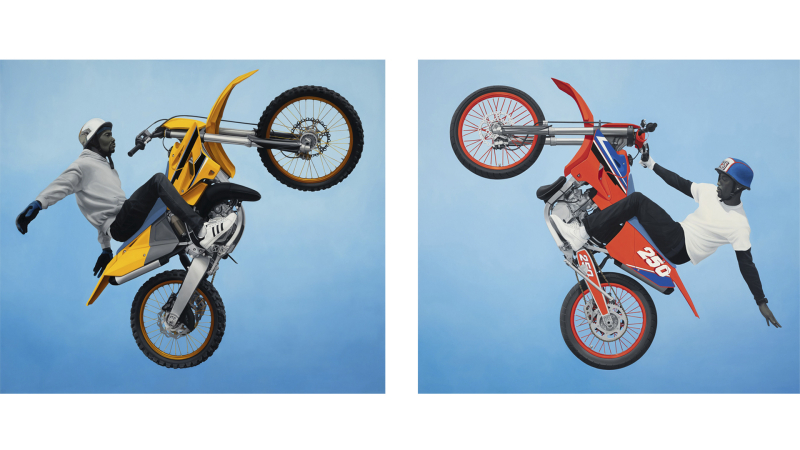
‘I’ve always been very concerned about the membrane of the skin: the surface and the connection to the volume and the body underneath it,’ the artist says when we meet at her studio in Dusseldorf, Germany. ‘But suddenly I felt like I needed more air in the paintings, and I began thinking about the cosmos.’
Vivian Greven, ‘When the Sun Hits the Moon’ at Perrotin NYC

Vivian Greven. X XIX, 2024
This recent thought led to the development of ten new paintings, which will be on view in ‘When the Sun Hits the Moon’, her debut exhibition with the gallery Perrotin in New York City, also marking her first solo exhibition in the United States.
When I visit, the soon-to-be-finished larger-than-life canvases are spread throughout the studio, leaning against all four towering walls of the former squash court. Each painting revisits a recognisable motif Greven has previously employed – the Roman goddess of Venus; cameltoes caused on female forms by tight garments; Antonio Canova’s iconic neoclassical 18th-century sculpture of Cupid and Psyche – while simultaneously introducing stark new developments, such as the bold use of the colour black.
To create her works, the artist scrolls through an ever-growing folder of inspirational images saved on her computer. Eventually, a certain image repeatedly captures her interest and ‘feels like it needs to be painted now’, she explains. Greven then prints the source images and reworks them into physical collages, as though using digital editing tools but cutting, pasting, or inverting entirely by hand. When she’s happy with the composition, she draws it on a canvas and then painstakingly layers oil paint until her desired colour gradients and painted image emerge. With the process of drying between layers, one work might take six months to complete, with coloration playing a key role: in her works, ‘colour is not a representation of reality’, she explains, ‘it’s much more a representation of energy, emotion, and temperature’.
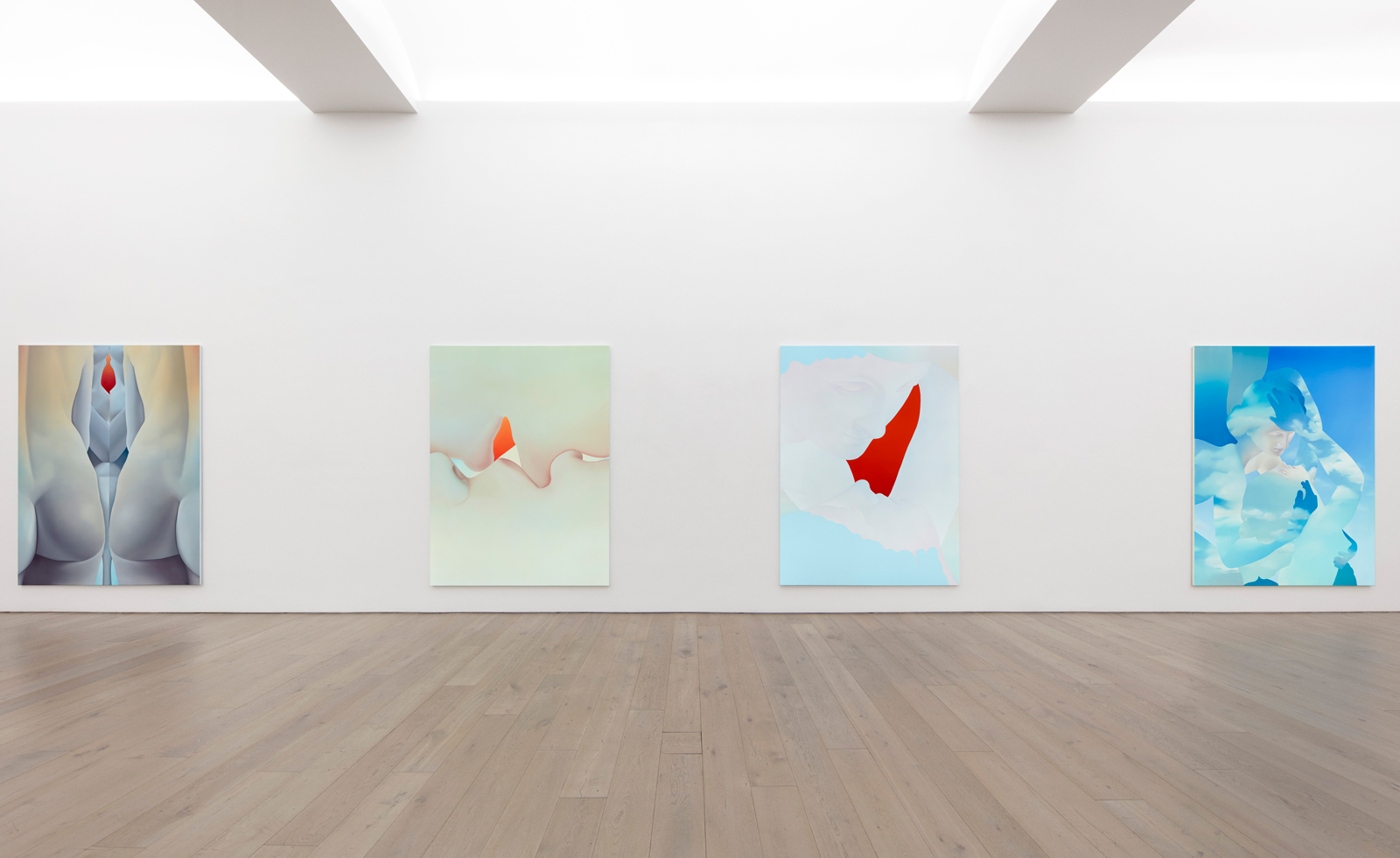
Installation imagery of the New York exhibition
When viewing a work like Ae Tha (2024) or Wh Ole I (2024), I immediately think of digital avatars floating in space, be it in the metaverse or an enigmatic black hole. Without pupils and with shiny, flawless, marble-like skin, the humanoid figures in Greven’s paintings offer blank identities, ready to assume the viewer’s individual projections and ideas. ‘The figures are super sensitive, romantic, almost touching, almost kissing,’ she says, ‘but at the same time, they have no pupils, no breath, no warmth. This resembles the feeling of being disconnected, of not being in the body, of not really living,’ she continues. ‘People today, including myself, lose their lives on being busy. We survive a day, rather than being in the day, being present and feeling what’s going on. And when we’re in this survival mode, we are our own avatars.’
Receive our daily digest of inspiration, escapism and design stories from around the world direct to your inbox.

Vivian Greven. Y O I, 2024
Amid today’s frenetic energies offline, online, and everywhere in between, Greven’s paintings offer a place of contemplative solace; a place to float among the (in)visible clouds. Specifically with the show at Perrotin, ‘all of the works are dealing with the question of what it means to become something else’, she explains. ‘It’s about changing gravity, about the feeling of a body that becomes body-less or becomes air. Figures,’ she continues, reflecting on our contemporary state of being, ‘are constantly dissolving into another state.’
‘When the Sun Hits the Moon,’ at Perrotin in New York City, runs 13 April – 23 May 2024
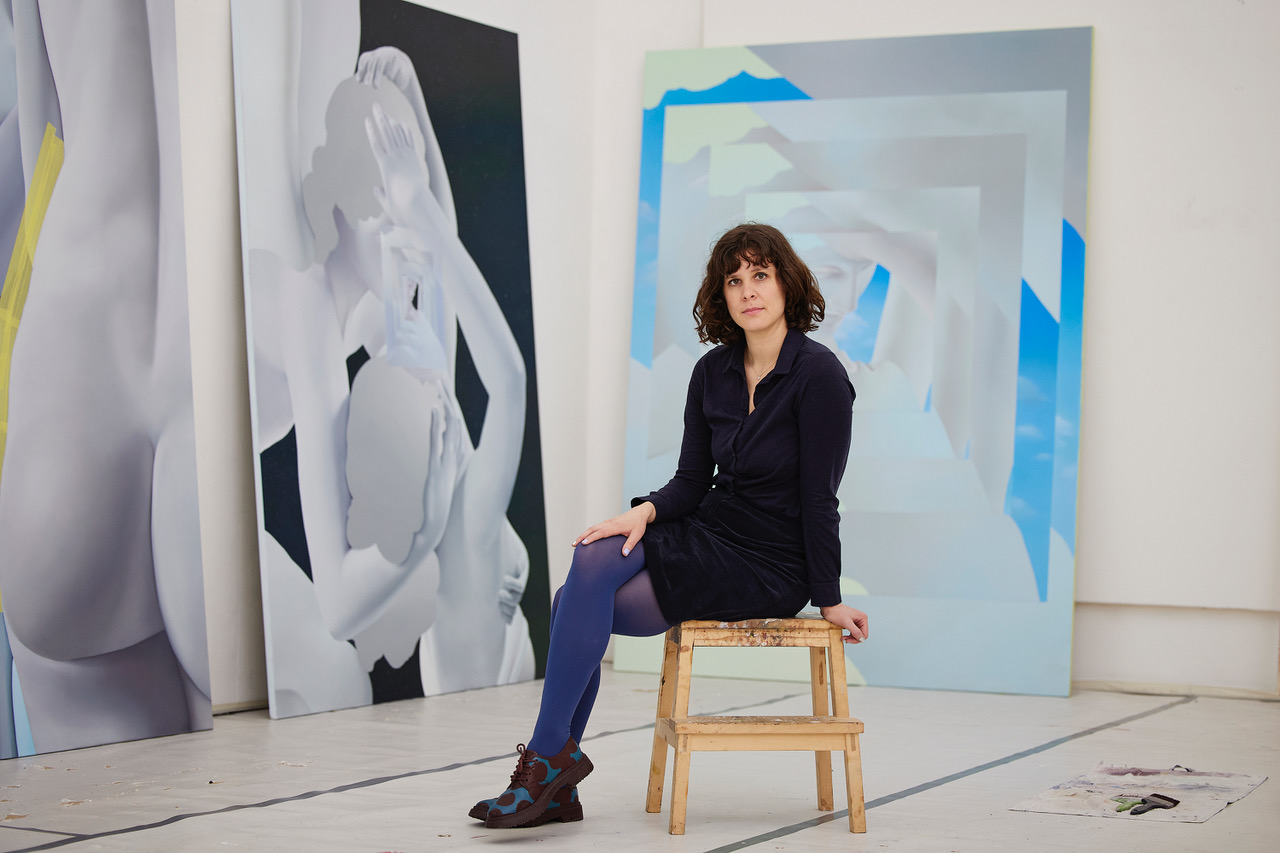
-
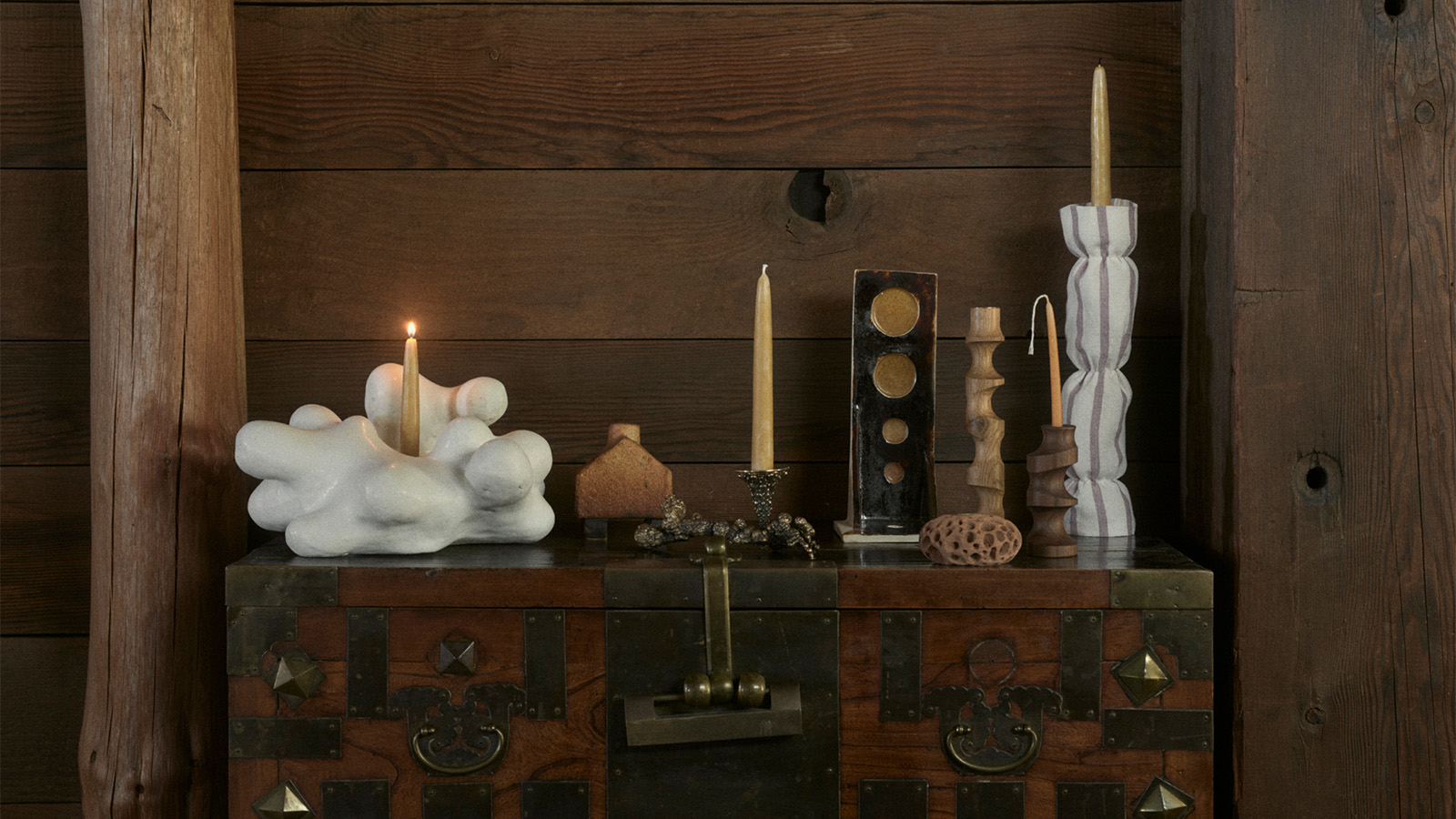 100 candleholders glow with design possibilities at Blunk Space, California
100 candleholders glow with design possibilities at Blunk Space, CaliforniaFor a new exhibition, 100 artists and designers have created candleholders inspired by the legacy of sculptor JB Blunk
-
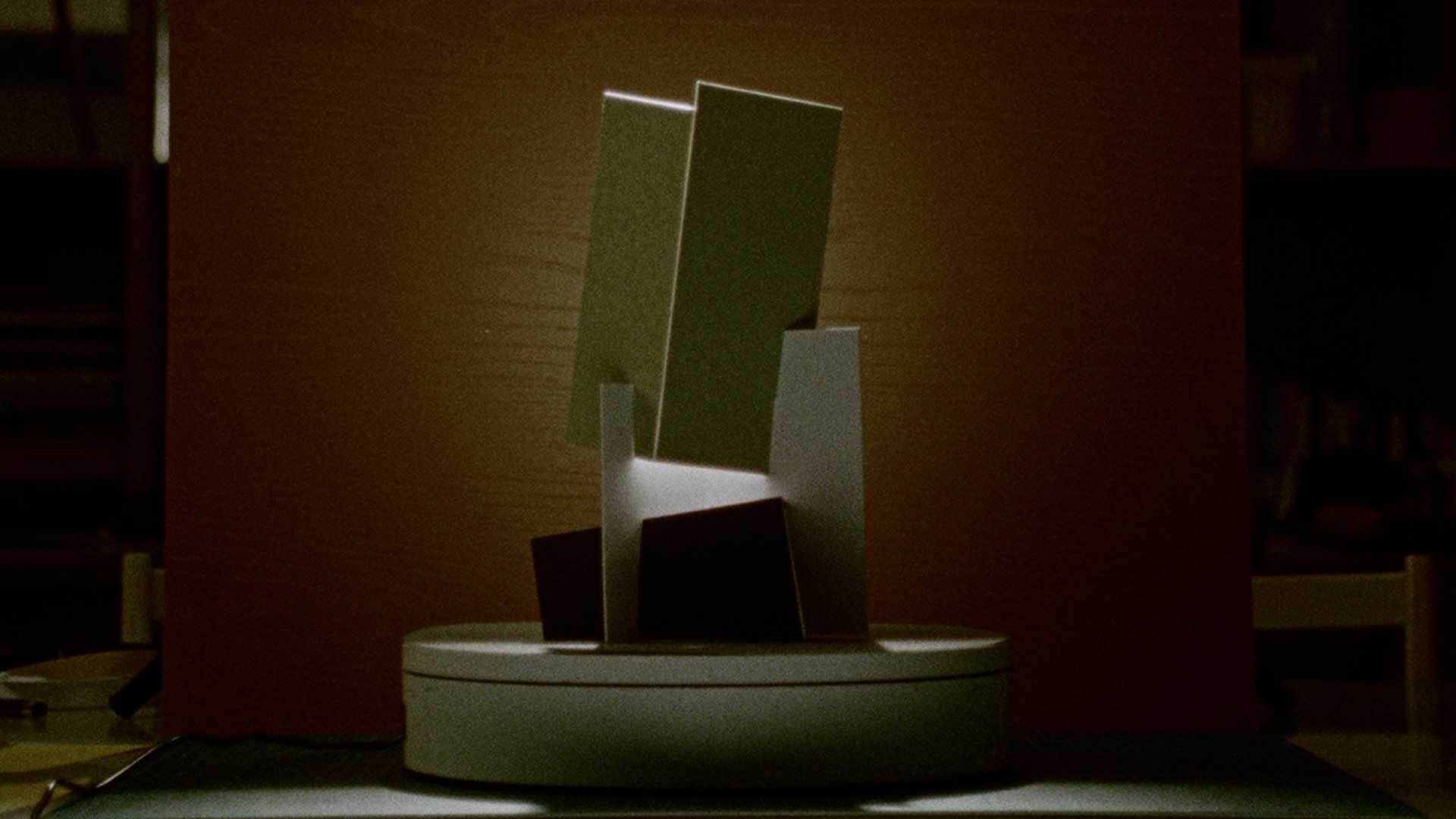 Wallpaper* Design Awards: Formafantasma’s assemble-your-own trophy is a crafty winner
Wallpaper* Design Awards: Formafantasma’s assemble-your-own trophy is a crafty winner'Celebratory, joyful and deliberately simple': Andrea Trimarchi and Simone Farresin reveal the inspiration and process behind their flat packed paper trophy for the Wallpaper* Design Awards 2026
-
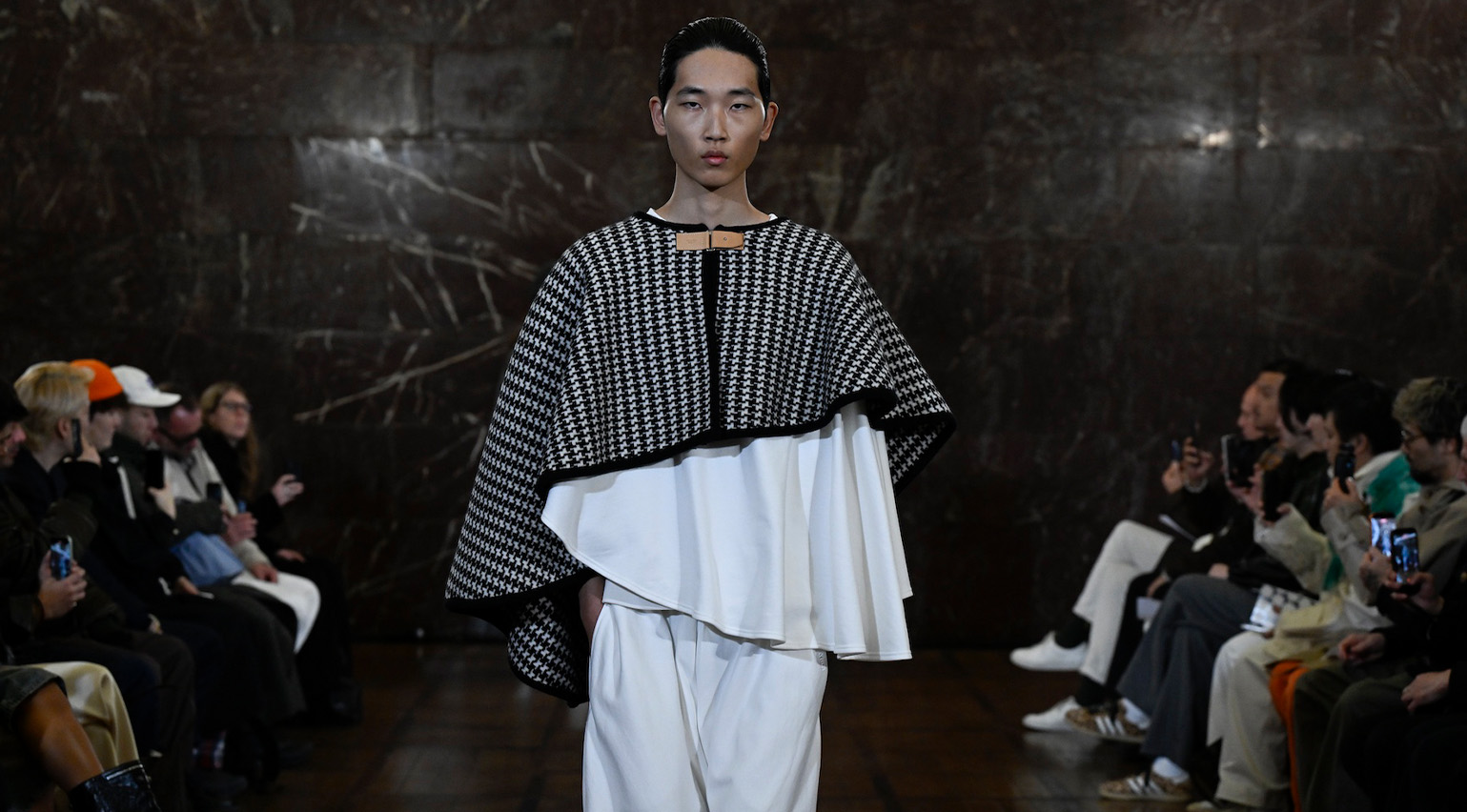 Hed Mayner’s Pitti Uomo show was all about finding beauty in ‘wrongness’
Hed Mayner’s Pitti Uomo show was all about finding beauty in ‘wrongness’The designer took to Florence’s La Palazzina Reale last night as Pitti Uomo’s guest designer – an intriguingly strange royal palace that reflected a collection which revelled in wrongness
-
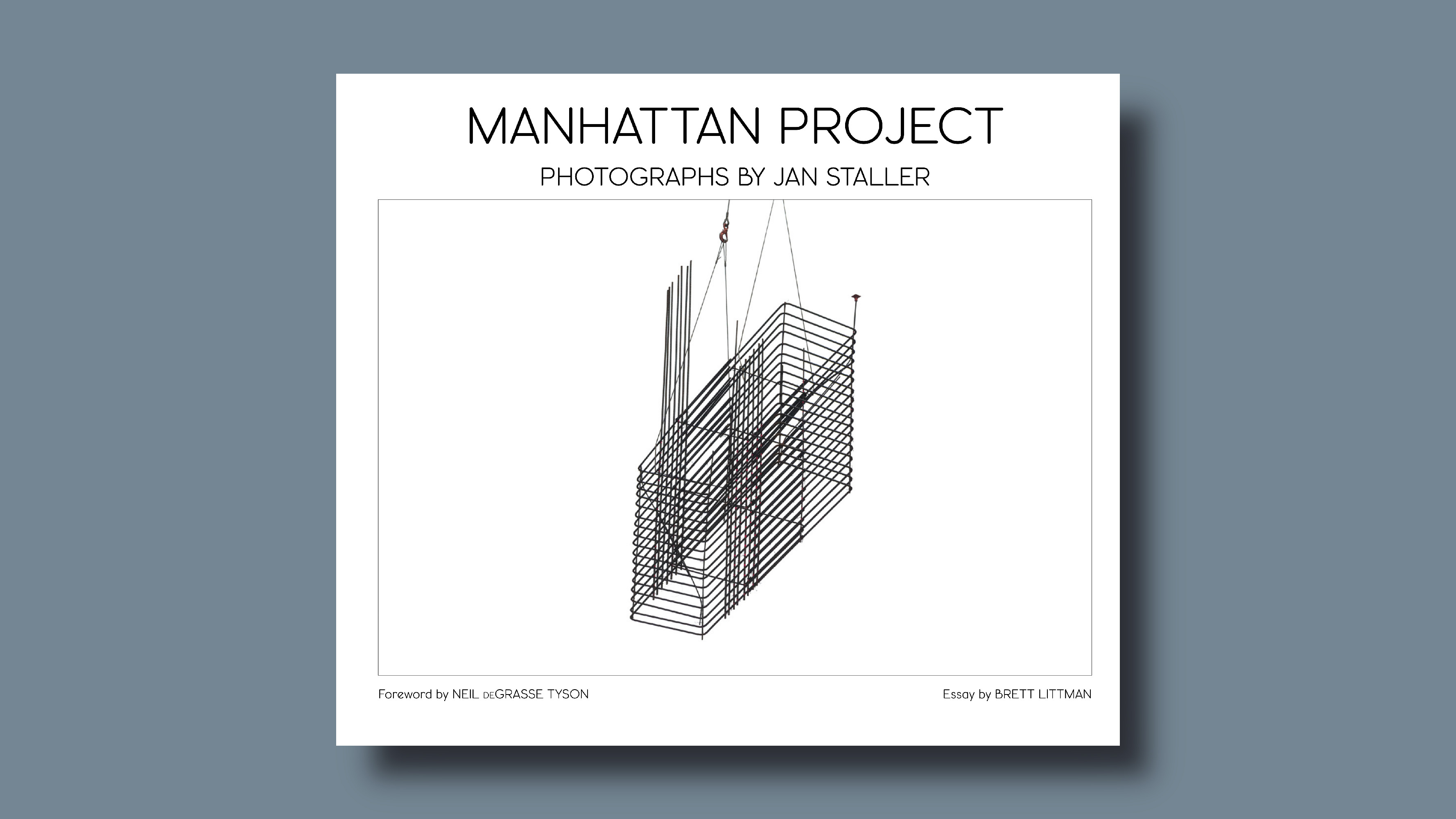 Jan Staller’s Manhattan Project is an abstracted chronicle of a city under construction
Jan Staller’s Manhattan Project is an abstracted chronicle of a city under constructionThe photographer Jan Staller shows another side of New York’s relentless change with this portfolio of dynamic, sculptural images
-
 Out of office: The Wallpaper* editors’ picks of the week
Out of office: The Wallpaper* editors’ picks of the week'Tis the season for eating and drinking, and the Wallpaper* team embraced it wholeheartedly this week. Elsewhere: the best spot in Milan for clothing repairs and outdoor swimming in December
-
 Nadia Lee Cohen distils a distant American memory into an unflinching new photo book
Nadia Lee Cohen distils a distant American memory into an unflinching new photo book‘Holy Ohio’ documents the British photographer and filmmaker’s personal journey as she reconnects with distant family and her earliest American memories
-
 Out of office: The Wallpaper* editors’ picks of the week
Out of office: The Wallpaper* editors’ picks of the weekIt’s been a week of escapism: daydreams of Ghana sparked by lively local projects, glimpses of Tokyo on nostalgic film rolls, and a charming foray into the heart of Christmas as the festive season kicks off in earnest
-
 Ed Ruscha’s foray into chocolate is sweet, smart and very American
Ed Ruscha’s foray into chocolate is sweet, smart and very AmericanArt and chocolate combine deliciously in ‘Made in California’, a project from the artist with andSons Chocolatiers
-
 Inside the work of photographer Seydou Keïta, who captured portraits across West Africa
Inside the work of photographer Seydou Keïta, who captured portraits across West Africa‘Seydou Keïta: A Tactile Lens’, an exhibition at the Brooklyn Museum, New York, celebrates the 20th-century photographer
-
 Out of office: The Wallpaper* editors’ picks of the week
Out of office: The Wallpaper* editors’ picks of the weekFrom sumo wrestling to Singaporean fare, medieval manuscripts to magnetic exhibitions, the Wallpaper* team have traversed the length and breadth of culture in the capital this week
-
 María Berrío creates fantastical worlds from Japanese-paper collages in New York
María Berrío creates fantastical worlds from Japanese-paper collages in New YorkNew York-based Colombian artist María Berrío explores a love of folklore and myth in delicate and colourful works on paper